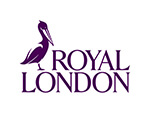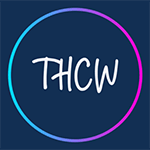The Science of Service Podcast: The office is dead… Long live the office!

By Ian Ellison, Workplace Geeks
Listen to episode four now: The science of transforming estates, workplaces and customer experience
As we head towards summer 2024, it’s easy to forget just how different work life was during the pandemic. For those fortunate enough not to have been permanently affected by Covid-19, the sequence of lockdowns created an unexpected silver lining for the workplace sector. The ‘great unplanned home-working experiment’, as some called it, essentially proved what advocates of home and agile working have known for decades: grafting doesn’t stop, and businesses don’t suddenly fail, when people no longer routinely come into work for duties that can be carried out at home.
Some claimed a watershed moment, that work would never be the same again. Others challenged that old habits die hard, demonstrated by both the gradual re-establishment of outlawed and potentially contagious handshakes, plus the now near-absence of face masks in public places. Meanwhile the debate between home versus office work raged in the media, punctuated by political appeals to boost city centre economies, and the occasional, to my mind, ill-judged return to work decree.
Hybrid’s here to stay
While most of us are keen to leave thoughts of the pandemic far behind, in one way its effect lives on. Hybrid working has emerged as the preference of many, with leadership teams grappling with prescriptive versus more permissive approaches to work routines. This prompts many questions…Is it enough to require people to simply return – or does increasingly versatile collaborative technology mean corporate spaces must meet far higher expectations? What are our workspaces for? How well do they perform? And how do they make us feel? In other words, questions around what’s known as ‘workplace experience’.
Which brings me to episode four of The Science of Service Podcast, hosted by the Workplace Geeks: Chris Moriarty and me, Ian Ellison. This time our focus is the very fabric of facilities management: buildings and spaces used by organisations of all kinds. Our mission is to discover how premises are used differently, and the technology and service elements that enable a progressive approach.
A workplace transformed
Cue our case study, the UK-based pensions, investment and life insurance firm, Royal London, which is also a valued Mitie client. Our guides are Head of Estates and Facilities Transformation, Leigh Fyffe, and Mitie Operations Manager, Peter Henderson, who introduce their evolving portfolio and workplace experience innovations.
If you’re wondering what this means in practice for people using Royal London’s office day-to-day, we’re on the same wavelength. Peter showed Chris just a few of the innovations on offer. Need to ensure you have the right workspace bookings sorted before you drop into the Royal London office? Check. Fancy a steaming cup of barista-brewed coffee and a friendly natter when you arrive to collect it? Double check. All through their workplace experience app.
Power to the people
Turning to Mitie’s in-house expertise, we meet Strategic Workplace and Technology Director, Simi Gandhi-Whitaker, and Solutions Director, Richard Anderson. Their suite of technology tools, including two platforms called Aria and Sphere, work together to quite literally put control of workspace experience in the palms of Royal London colleagues’ hands. Mitie Projects Managing Director, Mark Caskey, is an advocate of this approach. He highlights that the transformative value of great service provision is to focus on enabling people, not just managing facilities.
Everyone’s a workplace winner
Finally, we draw on the knowledge of two very different workplace experts. As Founder and Chief Energy Officer of People and Transformational HR, Perry Timms is a respected voice on positive workplace culture and organisational design. He understands how great culture and workspace complement each other, enabled by technology. This concept is echoed by author of The Human-Centric Workplace, Simone Fenton-Jarvis, who explains how happy people at work underpin a healthier and more sustainable society.
As technology advances apace, with promises of AI-enhanced productivity on the horizon, what will offices be most useful for in future? Creativity and togetherness, muses Perry, drawing on Stanford University Economics Professor Nick Bloom’s research on hybrid work. That means the office isn’t going to disappear any time soon. So, to cheekily plagiarise an age-old refrain…The office is dead. Long live the office!
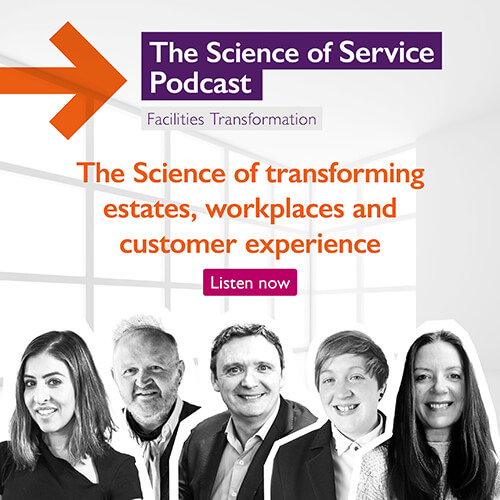
The Science of transforming estates, workplaces and customer experience
After the Covid-19 pandemic emptied offices and drastically altered our ways of working, organisations were forced to adapt. But four years on, what’s next for the modern workplace?
Chris and Ian explore the transformation of workplace experience, the ongoing impact of the pandemic and the rapid digital adoption driven by the shift to hybrid working. They visit Royal London’s head office to explore technology’s role in creating a seamless employee and visitor experience. They also get a glimpse into the future, where technology and AI will continue to shape the evolution of the workplace. This brave new world could offer even greater flexibility and enable colleagues to be even more creative.
-
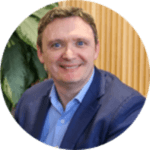 Mark CaskeyManaging Director, Mitie Projects
Mark CaskeyManaging Director, Mitie Projects -
 Simi Gandhi-WhitakerStrategic Workplace & Technology Director, Mitie
Simi Gandhi-WhitakerStrategic Workplace & Technology Director, Mitie -
 Simone Fenton JarvisThe Human-Centric Workplace
Simone Fenton JarvisThe Human-Centric Workplace -
 Leigh FyffeHead of Estates and Facilities Transformation, Royal London
Leigh FyffeHead of Estates and Facilities Transformation, Royal London -
 Perry TimmsFounder and Chief Energy Officer of People and Transformational HR Ltd
Perry TimmsFounder and Chief Energy Officer of People and Transformational HR Ltd -
 Peter HendersonOperations Manager for Royal London, Mitie
Peter HendersonOperations Manager for Royal London, Mitie
After the Covid-19 pandemic emptied offices and drastically altered our ways of working, organisations were forced to adapt. But four years on, what’s next for the modern workplace?
Chris and Ian explore the transformation of workplace experience, the ongoing impact of the pandemic and the rapid digital adoption driven by the shift to hybrid working. They visit Royal London’s head office to explore technology’s role in creating a seamless employee and visitor experience. They also get a glimpse into the future, where technology and AI will continue to shape the evolution of the workplace. This brave new world could offer even greater flexibility and enable colleagues to be even more creative.
“I think the place of work suddenly became, ‘why on earth would somebody want to come here if it’s just grey lines of desks and all the usual paraphernalia’? People’s expectations are, if I’m going to come, it’s got to serve my needs. It’s got to be worth it.”
Perry Timms, Transformational HR
Episode links
The science of transforming estates, workplaces and customer experiences
Webinar: Are your people thriving with hybrid working?
How to design the perfect workplace | Mitie
Mitie secures Integrated FM contract for Royal London Group | Mitie
Episode 4: The science of transforming estates, workplaces and customer experience
Speakers:
- Chris Moriarty
- Ian Ellison
- Mark Caskey
- Simi Gandhi-Whitaker
- Leigh Fyffe
- Simone Fenton Jarvis
- Perry Timms
- Richard Anderson
Chris Moriarty: Work. A major part of our everyday lives, the idea of exchanging labour for pay has been etched into human civilisation for centuries. But despite major jumps in technological capability, in recent times, the basic principles of work have remained pretty constant. But in 2020 the world of work changed.
[From recording] Boris Johnson: Good evening. From this evening, I must give the British people a very simple instruction. You must stay at home.
Chris Moriarty: The pandemic meant that the bustling office emptied as people were forced to work from their homes. A huge global homeworking experiment forced organisations to adopt digital technology at an unprecedented rate [you’re on mute…] and demonstrated to both employees and employers that there was another way to work.
And as the world slowly unlocked and office work became viable again, organisations were faced with the question of whether they would return to their old normal or embrace a new hybrid future. All of which has left organisations scratching their heads about what’s best for both organisational and individual performance.
Alongside this is the rise of employee experience as a central facet of the employer offer. Premium services, first class hospitality, community management. All ideas that have gathered momentum in the years preceding the pandemic are now at the heart of the conversation about enticing employees back into the corporate workspace.
Today we see the amount of data plotting the employee experience reaching peak levels. Utilisation, sentiment, environmental conditions, service provision. All of these threads generating millions of data points that are forming the basis of the decisions that organisations make when they’re creating their workplaces.
This is the story of that digital workplace. This is the Science of Service.
Chris Moriarty: Hello and welcome to episode four of the Science of Service podcast, brought to you by Mitie. I’m Chris Moriarty.
Ian Ellison: And I’m Ian Ellison.
Chris Moriarty: And we’re the hosts of the Workplace Geeks podcast. But in this series, you join us on a journey of discovery as we take up Mitie CEO Phil Bentley’s invitation to explore the story of how leading businesses are using the very latest technology and combining it with human endeavour to make radical changes to their organisations.
Now you’re more than welcome to focus on this episode, but equally, if you want to join us on every step of this journey feel free to pop back to episode one and work your way back to where you are now. Anyway, today we explore how all of this relates to workplace experience. So Ian, out of all the topics we’ve talked about in this series, it’s probably fair to say that this is our strong suit.
Ian Ellison: Indeed it is, Chris. So in both our current and past roles, we’ve been close to the ideas that have evolved around the modern workplace and its increasing importance, particularly regarding the so-called war for talent. Although I also think it’s fair to say that right now, the modern workplace is under more scrutiny than ever, involving questions about how people do their jobs, the role workplace plays, and the importance of this thing that we call workplace experience.
Chris Moriarty: Well, right. So, let’s dive straight into a story of a workplace team that is navigating all of that. Mitie introduced me to their client at Royal London and I caught up with…
Leigh Fyffe: Leigh Fyffe. I am the Head of Workplace Estates and Strategy at Royal London. Royal London’s the UK’s largest mutual life, pensions and investment company. One of our key drivers is to give people financial confidence and make them feel financially secure.
Ian Ellison: So it’s fair to say that Royal London represent what many would consider a traditional office environment. Which is arguably the most common ‘knowledge work’ environment, to use a term that’s been around since the 60s, to essentially recognise the diverse workforce that have to think and solve problems for a living. But their offices at Royal London are pretty large and spread across a number of sites.
Leigh Fyffe: We’ve got just under 5,000 colleagues, nine different properties across the UK and Ireland. They’re of different ages, they’re of different sizes. What we try to do from a workplace perspective is, when we’re fitting them out, we try to fit them out in a way that we’ve got a consistent workplace experience for colleagues though.
So it doesn’t matter if our building is a 1980s building or if it was just constructed two years ago. What we’re trying to do is make that workplace experience for colleagues consistent. It’s not all the same though. What we don’t want is each Royal London building to look exactly the same. It’s got to be appropriate for the location that we’re in and we’ve also evolved the design.
Chris Moriarty: So how does a workplace team like that manage all these different threads? They want consistency and experience, but with local design. And workplace practices change, experience expectations evolve. How do they stay on top of these things and make sure that they are managing experience, tweaking it where necessary, and then making sure that they are managing that real estate effectively and efficiently?
Ian Ellison: Well, Leigh and her team are constantly in communication with the community they’re supporting.
Leigh Fyffe: We also have a team within my workplace team that focuses on continuous improvement, workplace excellence. And what does that mean? So, we’re looking at the customer journey. We’re looking at all the different touch points.
We’re regularly going out and, kind of, surveying colleagues. We use our Yammer channel to get very quick feedback, but again, it’s insight that you don’t get just from talking to people. So we started that process quite a number of years ago. And then just as we were about, eight months before we were due to move in to Alderley Park, the pandemic kicked in.
Chris Moriarty: Oh.
Ian Ellison: Yeah. Almost overnight, every workplace in the country closed across the UK, and pretty much around the globe, as organisations, great and small, started to work out what they needed to do to keep work happening.
Chris Moriarty: So with that in mind, how did Royal London adapt?
Leigh Fyfe: We managed to get people working remotely within a couple of weeks, which was really quite incredible.
And there was a huge amount of learning came out of that. A really strong, positive culture before the pandemic. And we managed to maintain a lot of that when we were all working from home. So we as an organisation, rolled out hybrid working because we wanted people to still have that benefit of working from home if that’s what they wanted to do, but also make sure that they were still attending the office a certain amount of time to allow other colleagues to benefit from their knowledge and from that whole kind of collaboration and learning.
And we’ve rolled out quite a lot of technology to support workplace and provide us with that data that we can then interrogate so that we can make informed decisions in terms of what we want to do with the workplace going forward.
Chris Moriarty: It was a remarkable time and perhaps one that people don’t want to dwell on, but many believe it has the potential to totally reframe work itself. And there’s already research being published that suggests work patterns have changed for good.
Chris Moriarty: So to help us understand the wider implications of that I enlisted an old contact of ours who’s recently been inducted into the HR magazine hall of fame for his insights into this change.
Perry Timms: Perry Timms, Founder and Chief Energy Officer of People and Transformational HR Ltd. Um, work in the organisation design space, which I guess has a strong correlation to the workplace design space, because we do the intellectual design and then people do the actual workplace design.
Chris Moriarty: So first I tested the water about how high up the corporate ladder the discussion about new work practices were.
Perry Timms: You’re right to describe it as a central issue and it is still something that people are grappling with and they’ve got very almost like ‘fudge like’ solutions at the moment.
Ian Ellison: The idea of workplace experience being at the top of the agenda is fascinating given how many would suggest it was taken for granted in the years gone by. So accepted was the classic Monday to Friday, nine-to-five, that it rarely needed thinking about, unless maybe it was time for an office move.
Chris Moriarty: I spoke to Perry about this and how linked the world of workplace experience was to things like talent recruitment and retention. How was it pre-pandemic, and how is it now?
Perry Timms: I think pre-‘19 it was, um, quite underplayed except for people who wanted to lead with it as a sort of representation, I suppose, of their culture. So, you know, the famous Google slide and all that kind of thing. So those sort of things tuned me into a little bit of, um, the workplace experience was becoming more of a thing.
Um, as a sort of, ‘come work here because doesn’t it look and feel great’. But I think it did change after ‘19. So I think the place of work suddenly became, why on earth would somebody want to come here if it’s just a grey lines of desks and all the usual paraphernalia. People’s expectations are, if I’m going to come, it’s got to serve my needs. It’s got to be worth it. That is a genuine shift I’ve seen.
Ian Ellison: Okay, that outlines how important all of this is. So whilst you were catching up with Perry, I caught up with some of the team at Mitie to understand how that is shaping how they support their clients. What does workplace experience look like to them, and what role has technology played in that? I spoke to…
Simi Gandhi-Whitaker: Simi Gandhi-Whitaker, Strategic Workplace and Technology Director in Mitie.
Richard Anderson: and Richard Anderson, Solutions Director in Connected Workspace within Mitie.
Simi Gandhi-Whitaker: We’ve been, uh, evolving our workplace strategy over time. How do we use technology and data and workplace insights to really drive behaviours and changes?
Ian Ellison: And given what we’ve heard from Leigh about how quickly a change was required, insights that drive behaviour seems really quite important. And Richard suggested that some companies were more prepared than others.
Richard Anderson: And I think we were in a world where we were helping customers plan, uh, a move in their workplace, um, protocols from say fixed to agile. And that was quite a big step. And then overnight we, we leapt into hybrid for all. So those, some were already on the path and were designing in their strategies for how to work in a new way, others just weren’t ready. So that initial shockwave, I think, has lessened, has calmed down.
Chris Moriarty: So as that calms down, I guess attention moves to what a new normal looks like. And we know when organisations want to make big decisions, they’re keen to do it with as much data as possible. So how ready are they to get hold and make sense of that data?
Ian Ellison: Well, you remember when we spoke to Cijo, Mitie’s Chief Technology Officer, in the first episode? He spoke about the investment that Mitie has been making into technology, and this has put them in a really strong position to help with that data collection.
Simi Gandhi-Whitaker: We probably measure data today in Mitie for clients in the region of nearly a billion square feet. So Royal London actually were really early adopters of using our technology and how it can enhance what they’re doing. So they’ve kind of come along with us on this, um, on this roadmap. So we are in the right position to be advising them and guiding them and giving them that data.
And I think the technology has been a real game changer and enabler for us around, what to do with that piece of real estate. How to evolve the design of it, how to create that commute-worthy space.
Chris Moriarty: So that’s the rub, right? We’ve heard Perry talk about how the pandemic has shifted the power dynamic between employee and employer. We’ve seen how quickly organisations have had to pivot to support remote working. Employees have enjoyed that flexibility and now it’s become a central thread in talent acquisition. But organisations have to offset that against very large, very expensive pieces of real estate that might not be as full as they used to be.
So what Simi is talking about there when she says commute-worthy spaces is making sure that organisations are providing spaces for employees that work, that are enjoyable, that are attractive.
Ian Ellison: And not only that, the role of the workplace team becomes even more important as they manage the ebb and flow of these experiences, as they iron out wrinkles, as they jump on the problems that crop up.
Chris Moriarty: So we’ve heard from Leigh, and Simi has mentioned there about how Royal London have embraced technology really early and used it to help shape workplace experience. So I thought I would have a little nosey around their new office in London at 80 Fenchurch Street, or ‘80 Fen’ as the locals refer to it, to see how this all looks in practice.
Now, on arrival it looks like what you would expect from any financial institution with a nice office in the City of London. Nice atrium, lovely front of house, a swipe card that not only let me through the gate but also recognised who I was, where I was going, and called me a lift and pointed me in the right direction. And delivered me to the floor without me pressing a button.
Now that’s the landlord’s experience, so nothing to do with Royal London or the Mitie team per se, but it forms a crucial part of the experience.
Peter Henderson: It’s one of the decisions that was made by the Royal London team when they come in, uh, when they were looking to, to bring this building into their estate, is what’s it look like for our customer?
As they’re coming to our floors, we’re on the top five floors of this building, so they’ve got to go through that landlord security. They have to use our lifts before they even get to us. What does that look like? So the fact that you’ve got a smart swipe, which tells you which lift you need to get in, so you can’t get lost. You won’t accidentally stop off on the floor and wonder where, where you’ve ended up, um, is really important.
I’m Peter Henderson, the Operations Manager for Royal London with Mitie. Uh, we’re currently in our 80 Fen office. We’re going to do a building tour, looking at the customer journey and how we look at the data.
So, you’ll come out onto this floor once you’ve gone through, uh, that check in experience. And the first thing you’re going to see is our reception team. You know someone’s looking after you from the get go.
Chris Moriarty: So at this stage, we’re looking at where Royal London hosts their clients. So it’s got an amazing view of the city, a great outdoor terrace, lovely refreshments – but as nice as it was, I wanted to see the experience that employees are getting. So I asked him to take me down to the floors below.
Ian Ellison: Now that’s interesting, because there’s sometimes a sense that a lot of effort is put into the experiences for the spaces for customers, whereas employees get forgotten.
Chris Moriarty: Now, that’s certainly not the case here, as you’re about to find out. And a quick note to listeners on this one; Peter will mention customers, but in this context, he’s talking about Royal London employees, as we’re looking at it from a Mitie perspective – Royal London is their client. But one thing I think you’re about to hear is how seamlessly that blends together. So let’s pick back up with Peter, on my tour, who whipped out his phone to show me how people working at Royal London can use an app, which was developed by the team at Mitie, to manage their workplace experience.
Peter Henderson: So, um, within the workplace, we’ve introduced an app called Aria. And Aria is an app that all of our colleagues have access to. And within that app, if we have a, one of our customers has an issue, and they need to raise it to our attention and for all intents and purposes, they can’t find a member of our team – they’re busy supporting someone else on the other side of the building – but they need to raise a job to our attention. They can raise a job via the Aria app. They’ll go in, they’ll raise their job, and then they’re able to track it through.
Chris Moriarty: So, it’s got some prompts here as well, so, you know, it’s kind of like classic kind of chatbot type experience as well. Like, you know, what is it you want to do, and it’ll start walk you through it as well.
Peter Henderson: Yeah, absolutely. So, they’ve partnered it with, um, AI, as that’s coming into prominence now, so that the questions it asks you and prompts you for are much more intuitive. I’ll ask you a set of four, maybe five questions. It’ll give you a job reference, and then you can track that job through on the app. And it doesn’t mean that you can’t see a member of our team later and go, oh, just so you know, I’ve raised a job. They go, great, I’ll see if I’ve just picked it up. And they’ll still be able to action it, but it just, some customers love the surety that an app provides. Others want to talk to someone face to face. It’s an extra option. Yeah. But that provides a data stream that goes into our, our Maximo system, and then from there we can look at any trends that are pulling through or there’s a reactive issue.
‘That light on the 13th floor, that’s always out. Maybe we’ve got a little bit more of an issue there than just the bulb that keeps going. Let’s have a look at that’. So that feeds into that data and we can start making informed decisions. We can start looking at that. Trying to address things that are underlying the issues that have been raised. Um, but also the app does provide the option to order your coffee.
Ian Ellison: Wait, what?
Chris Moriarty: Right, you heard it. You can order your coffee, and we’re not just talking about paying at the till with the app. We’re talking about pre ordering your coffee for later in a day or on the way to a meeting. The future has landed, and it looks like a flat white you ordered an hour ago in time for your one to one.
Sorry, Peter. Continue.
Peter Henderson: Some people are very organised, don’t have time for a stop and a chat. Need their caffeine hit. They’re up at God knows when in the morning. They just leave the house, they don’t have a coffee. So what we have here is an online system where if you’re of that mindset, you as someone who likes to order your coffee and needed that hit, you can do it using the app. You’re able to select the location and the time that you want your coffee to be… or it doesn’t have to be coffee…
Chris Moriarty: Well, but that’s even, you’re saying about the location. That’s even before you’ve got here. So it’s not like once you’re in. So if I’ve come up at Liverpool Street and I’m looking at it and going, right, I’ve got about 10 minutes before I’ll be in the office, I’m going to walk there, I’ll pre order that so it’s there waiting for me when I arrive.
Peter Henderson: Absolutely. Um, so I don’t have to spend that time queuing that you’d normally have to do first thing in the morning.
Chris Moriarty: So you’re also getting as well, though, you’re getting a load of, going back to what you say about Aria, about from a ticket point of view and knowing what the trends are. You’re also getting a kind of, with this, a bit more of a kind of consumer-based type trend data where you’re getting, you know where your peaks of coffee orders are.
Peter Henderson: We’d be able to look at trends, such as a lot of people ordering their coffee in advance.
Chris Moriarty: Yeah, right, so you know that two hours in advance is the most common for, you know, for whatever reason.
Peter Henderson: Absolutely, so you can start understanding your peaks and troughs as they’re coming through. And then if we want the trial stuff, again, that provides the data that backs up a trial, so that if we need to put a business case together, we go, hang on, we’ve been harvesting a bit of data, this is the business case combined with some observations that we’ve had as well from the industry and some insights. Um, and it gives, it gives our client confidence going yeah, do that. Let’s give it a go and see how it goes, as opposed to someone just going with their gut.
Chris Moriarty: Yeah, did you order a coffee earlier on? Do you think it’s sitting there waiting for you?
Peter Henderson: I hope so. I did. I did. Yeah, brilliant. Thanks. Sorry. I’m late. Oh, no, that’s good. Thanks Syrus.
Chris Moriarty: So there you go. So that’s a collection point for it.
Peter Henderson: Yeah, this is a collection point for the coffee.
Chris Moriarty: So it’s not got your name on it.
Peter Henderson: And, and what we found with the barista on this site, because it’s a smaller site and the barista service has been a new thing that we’ve introduced since we moved into the building last year, people love the experience.
Chris Moriarty: Yeah.
Peter Henderson: They love it, they love to come across for a little chat. For them it’s, it’s an ability to step away from their desk, enter a different zone for five minutes and then come back.
Chris Moriarty: One of the things I noticed is that you’ve got very high utilisation here, you know, there’s so much talk now of empty offices, hybrid work and all the rest of it, but it’s busy here, right? And you’ve got these sensors as well to tell you exactly how busy it is.
Peter Henderson: Yeah, absolutely. So we, one of the things that came out of Covid was we did want people collaborating back in the office. Royal London recognised that you can be isolated at home. They’re a collaborative mutual company. They want people working together.
So what we have is sensors under every workstation and some of our touchdown spaces, and in every meeting room, so that we can understand how is our workspace being used? And that data helps us to drive decision making around, well, that neighbourhood, does it need to be that size? Because that team only comes in on a Monday and Tuesday and they’re finding difficulty finding desks on a Tuesday.
But perhaps that neighbourhood can be changed, and we can do it on a Thursday and Friday. And we would have those conversations with our customer based on the data that comes back from their sensor for utilisation.
Chris Moriarty: How do you use that information, that data alongside all the other data that you’re collecting on site?
Peter Henderson: That data feeds into our Mozaic platform under a new element called Spaces, which Royal London was the first people to trial, and they have a huge appetite for new technology and innovations, providing they’re relevant to them, of course. But from that information, the workplace experience managers within Royal London, who are responsible for engaging with our customer and managing those neighbourhoods, they’re able to have conversations with data to back it up.
So if a customer comes to us: “My team doesn’t have enough space, they’re always coming in and they’re not able to book any desks.” That workplace experience manager is now able to log into Spaces. They’re able to say, “Well, hang on, let’s isolate the utilisation for your team. What days are your team coming in? If your team were to come in a little bit later, or if your team were to change the days that they come in on a daily basis.”
We’re looking at occupancy and utilisation. We’re looking at that in our restaurants. So we have a restaurant in Alderley Park, near our Manchester office. And that occupancy data is cross-referenced against sales data within the restaurant. And then if we do promotions, we say, well, when are we going to put our promotions on? We want to do it when there’s maximum occupancy. We’re looking at the footfall, right? We’re not…the obvious thing is we’re not going to do something on a Friday. But do we do it on a Tuesday or a Wednesday?
We can use that, we use that data and we go, well, actually, it’s better to do it on a Tuesday. Because we’ve got more people coming in. We’re not looking to scrutinise people in a Big Brother way. We’re using it to make smart decisions.
Ian Ellison: Now that’s interesting because what Peter’s talking about there is data with purpose rather than data for data’s sake.
Chris Moriarty: Absolutely. It really is evidence-based decision making. Something else Peter showed me whilst I was on-site was at the entrance to each employee floor, rather than the reception, there’s a helpdesk. One member of the workplace team, and one member of the IT team. The former, from Mitie, the latter, an employee of Royal London. But for all intents and purposes, they look like a single support team, ready to help make your working day that little bit smoother, accessible, visible, available.
Ian Ellison: It’s interesting that you say that because this partnership model, in pursuit of better workplace experiences, is something that I spoke about when I caught up with…
Mark Caskey: Mark Caskey. I’m the Managing Director for Projects here at Mitie and I’ve been with Mitie since the start of 2023.
Ian Ellison: Now, Mark and his team are the ones going into many of Mitie’s clients and helping them navigate their challenges with work and the workplaces that support them.
Mark Caskey: We would often think about what we do as business to business, and our relationships still are business to business, but it’s more around business to employee. i.e. The services that we provide to the employees of the companies whose buildings we manage. I always think about the three, 30, 300 principle.
And three is your cost of energy, 30 is your cost of real estate, and 300 is the cost of the employees who work in the buildings that you manage. And so if you think about shareholder value, yes, we can continue to cut the cost, drive more efficiency, leverage technology to take percentage points out in the cost of running real estate. But actually, if you make your employees happier, they’re more fulfilled, more engaged, more collaborative, have more flexibility, which these are the things that they’re asking for.
Chris Moriarty: So this starts moving us in the direction of employee sentiment. And what I mean by that is whilst it’s easy to understand what is going on in buildings, what is critical is to understand how these experiences are making people feel. How is it affecting them, and in this context, their work?
Ian Ellison: This is tricky though because we’re getting into what makes people tick and that’s difficult to measure and therefore difficult to manage. But to help us on the way I caught up with the author of The Human-Centric Workplace, which is an exploration of this very topic.
Simone Fenton-Jarvis: So, I’m Simone Fenton-Jarvis. I work with FM, HR and property teams to create a more human-centric, data-led organisation for the people that are in it.
Ian Ellison: So, how did Simone frame great workplace experience?
Simone Fenton-Jarvis: You’ve left them with that, like, warm and fuzzy feeling by being in that environment. And it’s like, everything flowed as it wanted, they got everything they needed, there were no kind of pain points in there, and everything just went as expected, and maybe slightly better than expected. So, there’s so much that comes off the back of making sure that someone had the right experience.
Ian Ellison: Which speaks to your example at Royal London, Chris, and rather than see that as something on the nice to have list, Simone actually thinks that it’s fundamental.
Simone Fenton-Jarvis: If you enjoy doing what you’re doing, and you’re having a good experience at work, ultimately it’s the difference between somebody thriving in their work life, their personal life.
And I think taking that customer journey approach is something I’ve done when I’ve been, you know, in-house, because actually, going right back to the recruitment team and to the HR team and going, “Where does it all start?” Because actually, if we don’t get that bit right, the experience of the workplace, when they come in, you’re just going to be fighting fires all the time. So you have to not only manage the experience and manage the expectations of the experience right at the beginning, but you also have to listen throughout that journey. Is this going to be the right place for them to have a good experience? And from an organisational point of view, if that person is having the right experience, it’s going to feed that feeling of belonging and happiness, loyalty, trust, safety. It all comes off the back of having that right experience.
So from that organisational perspective, you can then start looking at talent retention. You can look at engagement, happiness, wellbeing, how you work with your colleagues, how you treat customers, how you innovate.
Ian Ellison: So how do we measure sentiment? Well, that’s something that Simi and Richard at Mitie have been looking at.
Simi Gandhi-Whitaker: We use Sphere, which is a sentiment survey. What we want to do is get under the hood of what the people in the spaces are thinking. Whether it’s an emotional need, whether it’s a physical need. We will take that, and we will ingest it, and we will understand it, and we will use our teams and our expertise and also the experience that we’ve got across multiple datasets to really help shape and guide our customers’ workplace strategy.
Chris Moriarty: And Richard actually thinks this might be the final piece of the jigsaw.
Richard Anderson: It was pretty clear that everyone was scrabbling for pieces of the jigsaw that they probably never had before. There was a lot of immediate reaction to what needed to be done with workplace. And then there was a lot for some organisations, there was a lot of, um, a lot of pause with almost some inertia really on, on, should any change happen? One of those pieces that was missing, specifically to tackle the sentiment, the opinion of employees on the, the effectiveness of the workplace to them, was making sure that we asked the right questions to capture that. And I think what we found was one size does not fit all. And the way we designed Sphere was to give our customers a clear view of building-by-building, how sentiment can differ. Because just providing spaces to work for employees is one thing, but every building, every workplace has a very different, um, a different atmosphere, a different mix of work settings.
Chris Moriarty: Actually, Perry, our HR expert from earlier, mentioned a really interesting project that he’s seen that put employee conversations front and centre.
Perry Timms: They’ve co-created the environment. So they’ve invited people to say, what do you need, in what format, and how’s that going to help us? So already there’s a vested interest that people have had a say in the design of pods, booths, benches, uh, you know, open space, natural light, whatever, right? So that’s a good sign. And then I probe deeper and say, so how does it work then? Because like, it’s quite appealing to go to that place because it’s nice. They have absolutely gone down the line of teams decide what’s best for them to come together at what time. And they have quite literally modelled scenarios about capacity there. They said, well, this team likes a Monday, Wednesday rhythm. Okay, this team likes a Tuesday, Wednesday rhythm. Okay, problem. Wednesday, we’ve got a lot of people in. So, what can we do to help mitigate that? So they’ve taken a quite sensible approach, I think, which is almost like scenario led, team led, and design led. And what I see is a pretty vibrant office when I go in. I don’t see any headsets on, other than naturally on a call, right?
Ian Ellison: Co-created workspaces, teams deciding their work patterns? That’s certainly a long way from the offices that I was part of when I started my career.
Chris Moriarty: But you also had to dodge the dinosaurs on the way home.
Look, people’s expectations were already on the up, but now the corporate office has some genuine competition. So, workplace teams are going to incredible lengths to show them what they can offer. Here’s Leigh from Royal London to explain their approach, some of which we’ve already heard Peter describe.
Leigh Fyffe: In terms of the customer journey piece though, and the workplace experience, that’s much more around tools that make it easy for people to be in the building. So for me, that’s tools like, I suppose, desk booking as it currently stands. It’s things like a workplace app that allows us to pre-order a coffee to, you know, get your sandwich potentially delivered to your desk, for us to get feedback really quickly from people if something’s not working.
What I’m keen to see is, is colleagues being able to view what desks are free, being able to book a workstation, being able to book a meeting room, order teas and coffees for the meeting, but also, you know, they’re in a meeting, they’re only going to have 10 minutes in between their, you know, the one meeting and another. So, pre-order a coffee and a sandwich that they can grab on the way to another meeting. That’s what makes the workplace experience a joy. Frictionless for me, you know, you can do it on so many other things in your personal life, so really keen to try and replicate that kind of technological experience within the workplace so that people, you know, can come in and things are just easy for them.
These are all things that my team are now really starting to look at, which is where we’ve really evolved from that kind of operational facilities management team, to a much more holistic workplace team that really tries to understand the impacts that the working environment, the workplace has, on colleagues and their productivity.
Chris Moriarty: So that’s great to hear, but Leigh has mentioned the p-word there: productivity. Something that is notoriously difficult to quantify and measure.
Ian Ellison: Sure, but nonetheless people do have a very real sense of whether they can get work done, and that’s essentially what we’re talking about here. But what we’re also talking about here isn’t just about getting work done, like Leigh just said, it’s the services and the ambience, if you like, of the workplace that wrap around work to lift it from a bog standard nine-to-five working day into an overall working experience: a choice, a meaningful choice.
Mark Caskey: That whole workplace transformation, it’s linked to the overall agenda around talent. I think about the choices employees have for the companies that they want to work with and their place of work increasingly is a meaningful choice for them. Five, 10 years ago, workplaces were probably 70 percent desking, maybe 80 percent desking. Workplaces of the future are probably going to have 30, 40 percent of desk environments, then there’s going to be space for collaboration zone. There’s going to be space for meeting rooms.
There’s going to be auditorium space, where you can actually bring events together and create new type of social networks. Food and nutrition plays a bigger part in someone’s choice now. So, if you think about the whole change of service, experience is different.
Previously, you’ll get more productivity out of your staff, getting greater productivity out of your staff base, which is 10 times the cost of your real estate. Actually, that’s where the shareholder value is. We have to think around more metrics and services that drive human experience and people productivity.
Chris Moriarty: Okay, we can see how workplaces are evolving and how organisations are responding to that evolution. But what about the role of technology? We’ve touched on it, but surely data, automation, new hardware, new software is making all of this easier to manage?
Ian Ellison: Remember when you were speaking to Peter about Aria? Well, the data it’s collecting means that conversations can be much more proactive, rather than just reactive.
Mark Caskey: We’re now in a position where we can actually suggest to Royal London, you can actually downsize or make changes to the space that you’re actually using. And, and there’s an example of a building in Manchester, where we’ve actually taken out a complete floor because our occupational sensors are telling us we don’t need as much space.
Chris Moriarty: Wow, so now we’re seeing another step. We can use tech to measure use, that’s fairly straightforward, and we can also use tech to manage and, in some cases, enhance experience. But now it’s about using all of that consumer information to make adjustments, recommendations, add value. Like your streaming service for your favourite films, it’s understanding your patterns and then making recommendations off the back of it. It’s mass customisation, a standardised service, but with the ability to create bespoke workplace experiences.
Ian Ellison: So, it feels like we’re on the cusp of something really exciting here, something that might have been supercharged by the necessity of the pandemic. But if there’s a silver lining to be had from that, it’s that we might actually start to see the digitally-enabled workplace experience that so many people have talked about in the past. This might actually become a reality now for so many people.
Chris Moriarty: So what for the future? Well, work will continue to evolve. But with the right mindset and the right digital layer, we should be better prepared for that.
Leigh Fyffe: It’s a journey that we’re on, you know, I wouldn’t say for a minute that we’re finished. I don’t think we ever will be. That’s the beauty about workplace, isn’t it? And how it’s evolving and what the different requirements are from different teams, different business units.
Simone Fenton-Jarvis: We need to make sure we stay focused and actually that workplace experience is like the centre stage of the organisation. And that people hold the organisation to account as well.
Chris Moriarty: But even with these enhanced experiences, companies are still likely to be seeing their offices half empty, right?
Ian Ellison: Well, maybe. But equally, Perry offered a glimpse into the future on that. And it’s one that might surprise you.
Perry Timms: I will go to Nick Bloom’s research from Stanford, where he’s shown the kind of plane of remote and then the dip, and now there’s a plateau and a stabilising thing. And it’s higher numbers of people working remotely and flexibly, even partially, than it ever was before.
I think some of it will also depend on what AI ends up stripping out of work, that people kind of go, well, if I, if I’m getting rid of the routine administration, I don’t need a quiet space to do that anymore. I’d like to do more vibrant co-created stuff. And that means I’ve got to be with people. So, bizarrely, AI could engender a little bit more voluntary opt-in to team-based scenarios because it will take away work that’s either, you know, churning or, or cognitive, because we’ll outsource some of that to the machines and therefore we want to be creative, not as deeply analytical or process oriented.
But I think that’s a five year trajectory, by the way. I don’t think that’ll happen that soon. So I think we’ll see what goes on. And then I couldn’t predict it, but my sense is we’ll make some very good choices about when we come together that will perhaps start to look like it’s going back to what it was in ‘19.
But I think the numbers might tell us that, but the things we’re doing together will be very different from what we did in ‘19.
Ian Ellison: So watch this space.
Chris Moriarty: Indeed.
The Science of Service podcast is produced by The Workplace Geeks. Our dialogue editor is David Crackles, and we’d like to thank Leigh Fyffe, Perry Timms and Simone Fenton-Jarvis for taking the time to speak to us. For more information about what we’ve discussed on this episode, please visit mitie.com.
Read next
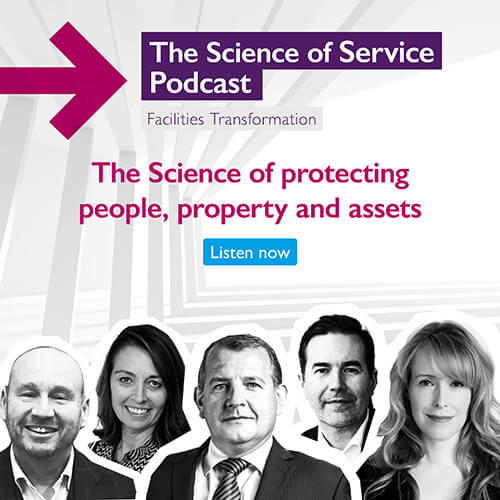
The Science of Service Podcast: Beneath the tip of the security iceberg
What’s your reaction to the word ‘security’? Perhaps it triggers thoughts of guards outside shops and buildings. Or maybe the queue before you get to purchase duty free bargains in the airport. The truth…
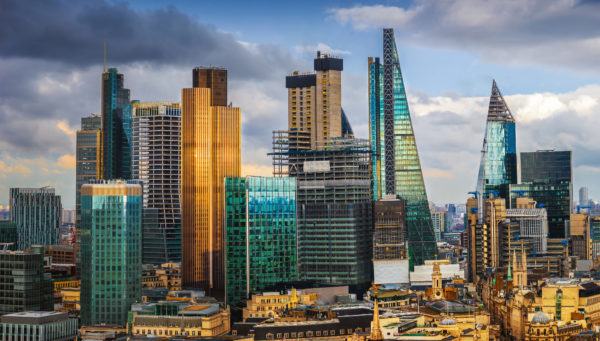
Mitie bolsters hybrid workspace evolution with the launch of Sphere
Mitie has launched Sphere, its new technology solution to help businesses design the most effective workspaces for their people.
Mitie to deliver Royal London Group’s first integrated FM contract
Mitie has secured a new integrated facilities management (IFM) contract with Royal London, the UK’s largest mutual life insurance, pensions and investment company. This is the first time Royal London has combined its FM services under one provider with an initial contract for five years, with the option to extend for an additional two years.


